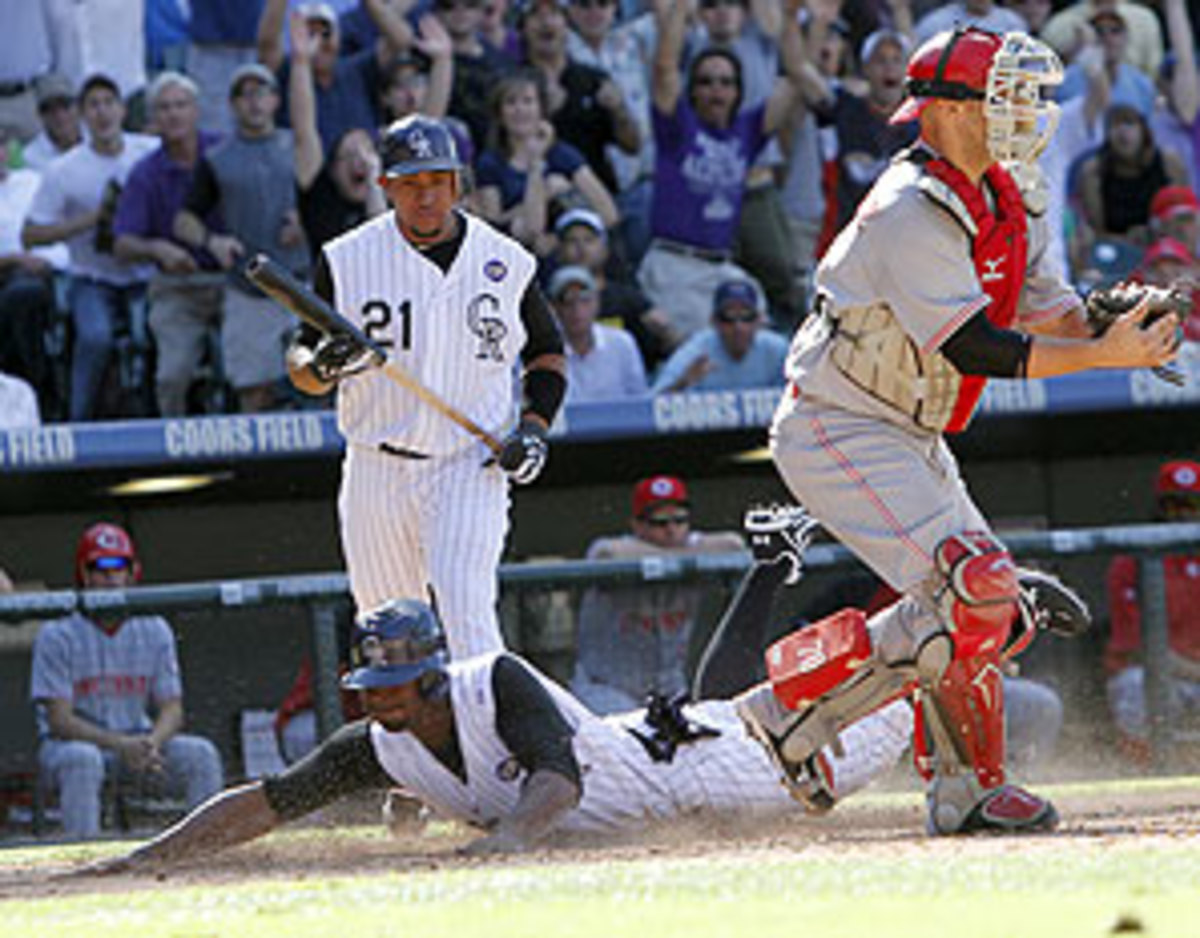
Expanded rosters make for unfair and illogical competition
That was a fabulous victory for the Rockies Thursday, coming back from a 5-0 deficit to win 6-5, the last run scoring when rookie Chris Nelson stole home. Too bad it was made possible by one of the worst rules in baseball: teams suddenly can play with as many players as they wish, up to 40, when the pennant race gets down to its last month. You can even suit up more players than the other team.
Colorado manager Jim Tracy did something he could never do under the rules of the first five months of the season: he used seven position players off his enhanced bench, including Nelson.
Beginning Sept. 1, teams can call up as many players as they wish from their 40-man roster. What all year was 25-vs.-25 becomes 33-vs.-29 or 35-vs.-32 or . . . you get the point. It's illogical.
What used to be a "reward" for minor leaguers, the promotion of reinforcements has become a way to outflank opponents. Multiple catchers, pinch-runners, left-handed relievers, etc. change how the game is played and managed.
The solution is simple: teams still can expand their rosters up to 40, but each day they must designate a "game roster" of players eligible for that game at a much lesser number that is the same for all teams. I would keep the game roster at 25 -- if you figure three or four starting pitchers would not be made eligible, the manager still gets three or four extra players. Some managers prefer that a September game roster be set higher -- at about 28.
In any case, baseball needs to end this folly of teams playing with different sized rosters at the most important part of the year. General managers have talked about establishing game rosters for years, but not with enough seriousness to get something done.
That steal of home by Nelson, by the way, was freakishly rare thanks to the vapor lock by Reds pitcher Nick Masset. There is no way it should be possible to pull off a straight steal of home against a right-handed pitcher throwing out of the stretch. Somehow Nelson did it. No player had stolen home with a right-hander on the mound since Brandon Phillips of the Reds managed to do it against Mets pitcher Fernando Nieve in July of last year -- but that was a botched pickoff, not a straight steal.
Just when you thought the value for free-agent-to-be Carl Crawford couldn't get any higher, he adds another bonus to his package of skills: three-hole hitter. Rays manager Joe Maddon these days is building his lineup around Crawford, the erstwhile tablesetter, as a big-time RBI guy. Crawford hits third, rather than first or second, followed by Evan Longoria and Carlos Pena.
"Carl drives in runs with singles and doubles," Maddon said. "He puts the ball in play [with runners on]. He's not a high strikeout guy. Carl will move the ball around."
Crawford has hit third 27 times, and with 75 RBIs this year, is likely to surpass his career high of 81 RBIs. He is a .364 hitter with runners in scoring position this year and a .311 hitter in those spots in his career.
The Giants have an upcoming promotion in which they will give away Buster Posey replica jerseys, featuring the name and number 28 of their impressive rookie catcher. Posey's number has a uniquely unremarkable history in baseball: it is the only number between 1 and 37 that is not retired by any major league club. Go ahead, try to name the most famous number 28 in baseball history. Bert Blyleven? (Alas, he also wore number 22, with Pittsburgh.) Rip Repulski? Andy Stankiewicz?
Why such a bland history for such a perfect number? That's right: the only perfect numbers available to ballplayers are 6 and 28 -- numbers that are the sum of its divisors. Football has four retired 28s: Abner Hayes, Willie Galimore, Curtis Martin and Marshall Faulk. Who knows, maybe Posey is the perfect guy to wear the perfect number.





